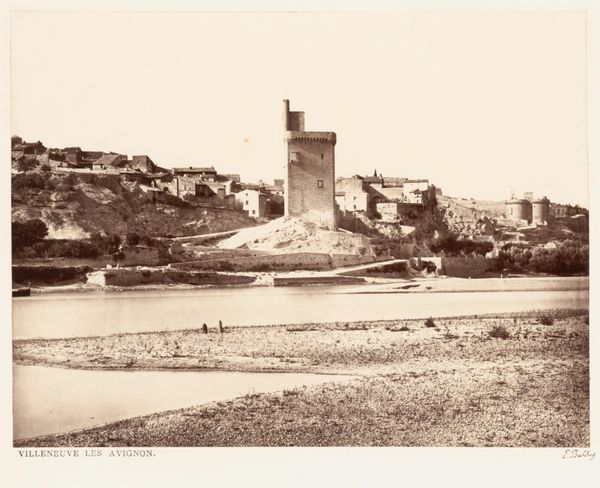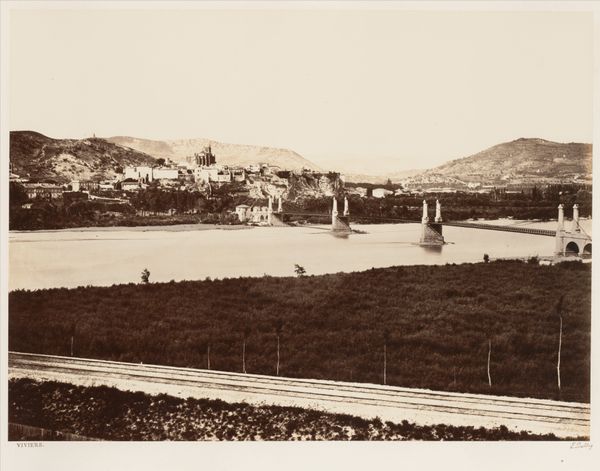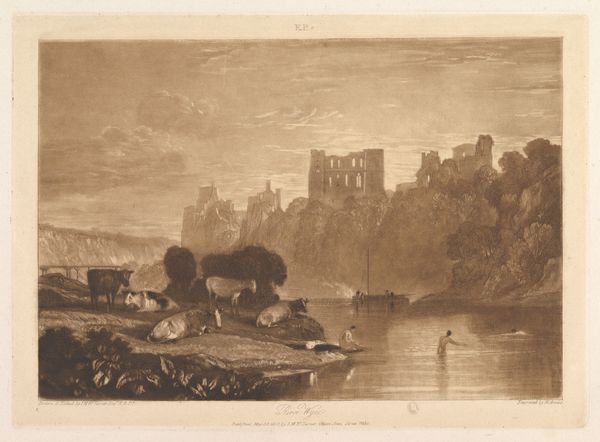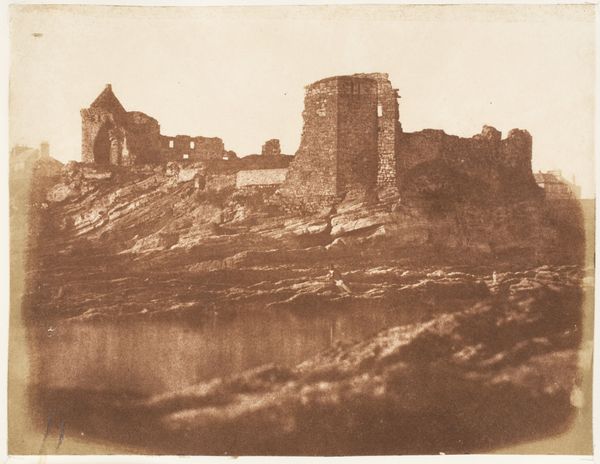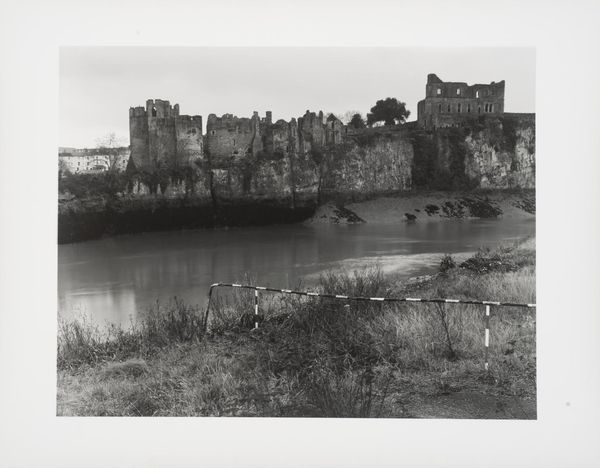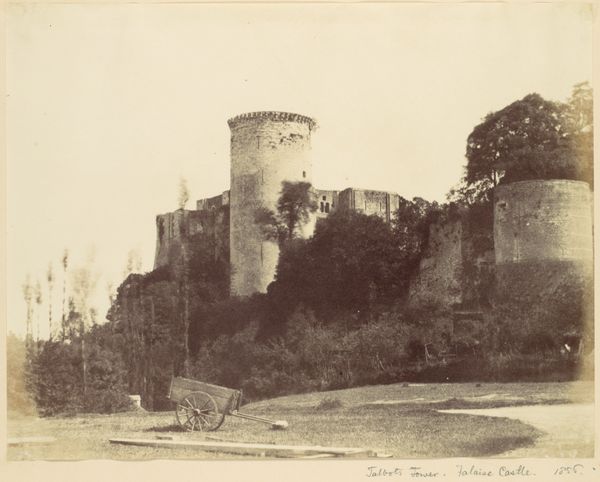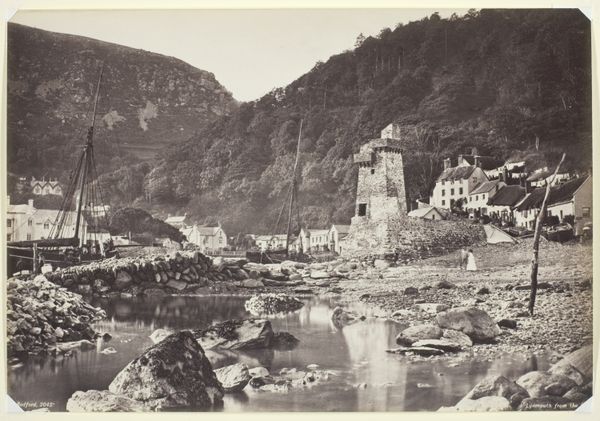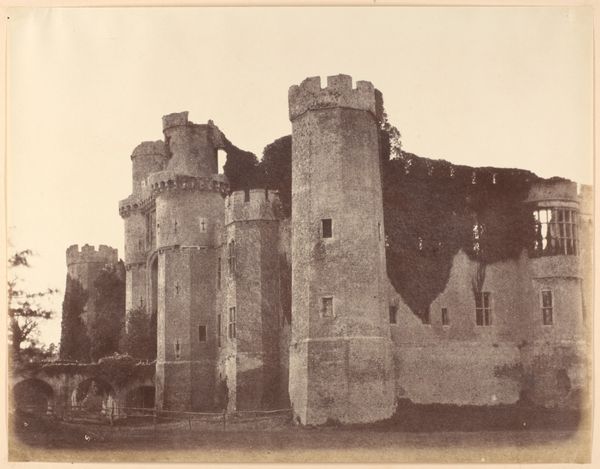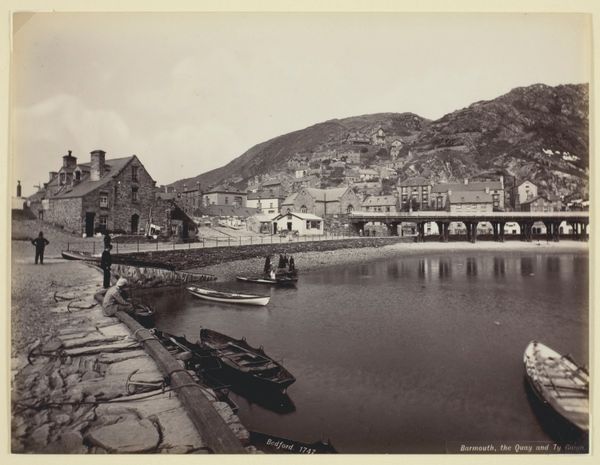
Dimensions: height 162 mm, width 219 mm, height 315 mm, width 431 mm
Copyright: Rijks Museum: Open Domain
Curator: Before us, we have "View of Conwy Castle, Wales", a gelatin silver print believed to be crafted between 1855 and 1890 by Augustus Kelham. Editor: It's quite striking. The stillness of the water paired with the stark silhouette of the castle creates a profound sense of enduring history, almost spectral, across that monochrome palette. Curator: Indeed, and when considering the historical backdrop, these kinds of grand structures represent more than just architectural prowess; they were centres of power, control, and deeply entrenched social hierarchies, especially under British imperial ambitions. Editor: Absolutely, but note how Kelham's careful framing, bisecting the composition almost equally between sky and water, uses this stillness to amplify the architectural details of the castle itself, the crenellations, the towers. It focuses our attention on the geometry and texture. Curator: But think, too, of the cultural narratives associated with castles - symbols of feudal power juxtaposed against the promise of industrial progress represented by the bridge spanning the water. The socio-economic tension practically vibrates. Editor: The bridge, however, offers an important counterpoint aesthetically; the horizontal lines play beautifully against the verticality of the towers. The contrast softens the visual experience as much as it may or may not highlight inherent cultural biases. It is how formalism and content together reveal the genius in the photograph. Curator: Speaking of inherent content, it would be rather insightful to discover more on how colonial projects utilized photography for the purpose of asserting dominance or establishing perceived "picturesque" ownership in Wales. Editor: A point well taken. Even considering such layers of meaning, the interplay of light and shadow and the texture achieved within this gelatin silver print contributes volumes toward an understanding about what it means to visually interpret an era's ambition and its artistic capability, simultaneously. Curator: True. It serves as a potent reminder of the past and its echoes that resonate through contemporary political and social landscapes. Editor: I’ll continue considering what formal properties define that resonant experience as you continue tracing echoes in social spaces. It’s always worth finding new lenses, so to speak, through which to examine a piece and how it can keep defining both art and politics.
Comments
No comments
Be the first to comment and join the conversation on the ultimate creative platform.



